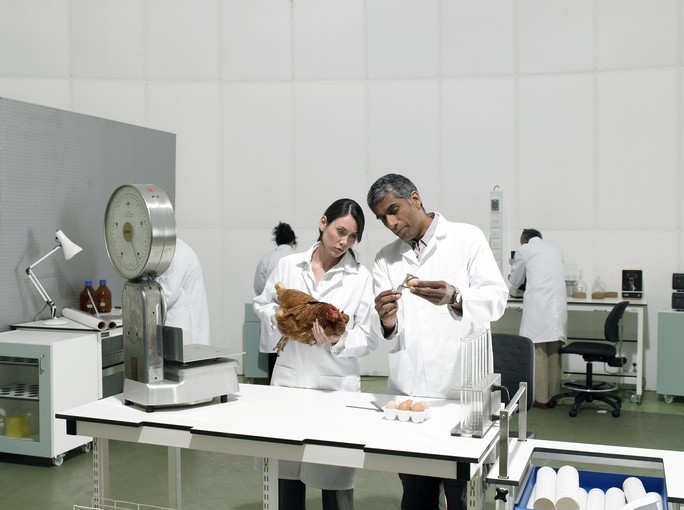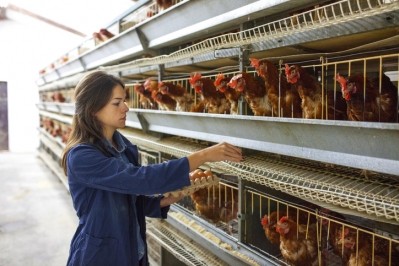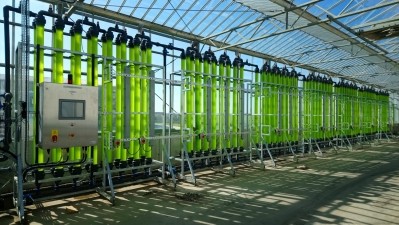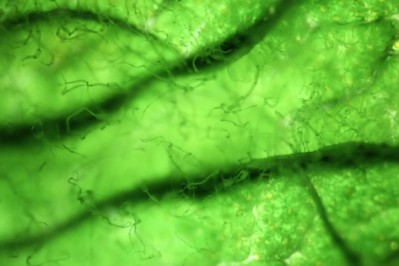Adding DHA-rich biomass raises omega-3 levels in eggs, hens

An international team of researchers from Brazil, Ireland, Italy and France explored the use of docosahexaenoic acid (DHA) in the diets of layer hens as a way to add omega-3 fatty acids to eggs and bird tissue. The study was published in the Journal of Applied Poultry Research.
“The objectives of the current study were to investigate the effect of inclusion of heterotrophically grown Aurantiochytrium as a dietary supplement for laying hens on the DHA enrichment of eggs, breast, thigh, liver, and kidneys at different inclusion levels,” the researchers said. “The efficiency of DHA transfer from feed to the egg and from feed to the edible tissues was also investigated.”
The team found that adding the heterotrophically grown, unextracted DHA-rich protist (AURA) to the bird’s diet had no negative influence on health or performance. Levels of DHA in the eggs increased as the protist ingredient was included in the feed.
“Significant increases in egg DHA concentration were observed, with 60, 164, 259, and 410 mg DHA/100g of egg collected from birds supplemented with the DHA-rich protist at a rate of 0, 0.5, 1, and 2.5% of the diet, respectively."
The enrichment could be used to raise the value of meat from the spent hen for use in products including human and pet food, they said. The tissue also could be used as a partial substitute for feed ingredients like fish meal and fish oil.
“Dietary supplementation with AURA significantly increased the DHA concentration in hen eggs and tissues, with the liver and eggs enriched to the highest degree."
Developing value-added feed ingredients
Human consumption of increased levels of omega-3 long-chain, polyunsaturated fatty acids (n-3 LC-PUFA) has been linked with health benefits, they noted. It is possible to use bird diets to alter the fatty acid content of eggs.
Adding DHA-rich Aurantiochytrium biomass has been found to raise eicosapentaenoic acid (EPA) and DHA levels in animal-generated proteins like chicken eggs, they said.
“Aurantiochytrium limacinum is a member of a group of protists called thraustochytrids, which are commonly classified as microalgae but also display fungus-like characteristics,” they said. “These organisms are primary producers of LC-PUFA in the marine food chain and can be grown heterotrophically on suitable carbon sources.”
Using the biomass as a feed ingredient involves additional cost but means that eggs can be sold at a higher price, commented the authors.
Why omega-3 supplementation of laying hens?
Following feed costs, hen value is the largest expense for layer industry producers, the researchers said. The meat generated by spent laying hens includes protein, amino acids, PUFA and is low in fat, but remains of little economic value.
“When recovered, the meat and other by-products of spent hens are used in the production of processed foods such as soups, pies, sausages, chicken nuggets, or processed into pet food ingredients, with an estimated 2.6bn spent hens annually being used for this purpose,” they reported. “However, the majority are simply disposed of, frequently because large abattoirs are no longer willing to slaughter spent hens, which can incur additional costs or lost earnings for the farmer or integrator.”
A method to improve the value of spent hens would boost business results and promote sustainability within the industry along with providing new ingredients for the bio-economy and potential use in feed, they said.
Previously, linseed and fishmeal have been used to provide n-3 LC-PUFA for layer hen diets to generate omega-3-rich eggs, the researchers said. The process also enriched bird tissue and organs, which improved nutritional value and provided a valuable commercial product.
“However, the use of linseed is considered inefficient and use of fishmeal becomes less useful because of sensory off-flavors being formed in the egg and marine conservation concerns,” they said.
Feeding trial details
During the feeding study, 36 laying hens received one of four diets for 28 days, following an eight-day acclimation period, said the team.
The diets included a control and three diets with increasing levels of heterotrophically grown, unextracted A. limacinum biomass (AURA) at 0.5, 1 or 2.5%. AURA was assessed for nutritional composition prior to the feeding trial.
Bird weights were checked on days 0 and 28, average daily feed intake (ADFI) and the feed conversion ratio (FCR) were calculated, and egg production per pen was recorded, they said. Unsalable eggs were noted.
Egg weight per pen was assessed and eggs were checked for quality and DHA content, they said. A selection of birds was harvested on day 29 to collect liver, thigh tissue, breasts and kidneys for fatty acid analysis.
The efficiency of DHA transfer from feed to eggs was calculated, they added.
Results
The biomass supplement did not alter hen weight, ADFI, FCR or feed conversion efficiency, the researchers said. Egg weights and laying remained similar for birds regardless of diet.
Birds on the diet with 0.5% AURA supplement saw an increase in protein compared to eggs from birds on the control diet. But it is unclear if the difference is related to the supplementation.
However, eggs from birds on the supplemented diets showed a linearly increasing amount of DHA content, they said. “The level of enrichment observed in these studies is typically similar to when fish oils are used as a supplement; however, higher levels of egg enrichment can be achieved with marine protists without impacting the sensory characteristics of the eggs.”
Similarly, adding higher levels of DHA to the feed raised the amounts found in bird tissues and organs, they said. Birds on the 1% and 2.5% diets were found to be significantly higher than the control regarding how much DHA was found in breast tissue.
“The DHA content of the kidney from the 1.0 and 2.5% AURA treatments was significantly higher than that of the control, whereas, in the liver, each increase in AURA supplementation resulted in a significantly higher DHA content,” the researchers said. “This high DHA content is expected because of the key role that the liver plays in lipid metabolism.”
There was also a linear increase in DHA content of the layer breast, thigh and kidney as the amount of DHA in the diet grew and the number of days birds had been on the diets expanded, they added.
However, the efficiency of transfer of DHA decreased as more AURA was added to the diet, they said.
The poultry industry has been looking for a way to increase the value and use of spent hen meat as millions of spent hens are not used for food annually, they said. “Processed spent hens, enriched with sustainably produced, DHA-rich protists, could offer an alternative to fish oil or fishmeal, increasing our ability to meet the LC-PUFA nutrient requirements of the population.”
Source: Journal of Applied Poultry Research
Title: Docosahexaenoic acid enrichment of layer hen tissues and eggs through dietary supplementation with heterotrophically grown Aurantiochytrium limacinum
Authors: C.A. Moran, M. Morlacchini, J.D. Keegan, F. Rutz, G. Fusconi
DOI: /doi.org/10.1016/j.japr.2019.10.002















